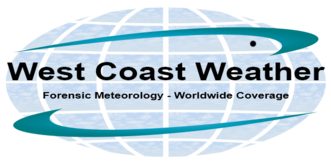ANALYZING THE DATA
Have history’s most famous solar electromagnetic storms correlated with history’s F4 and F5 tornadoes? The inquiry is easily answerable by analyzing the dates of the sampling of major solar electromagnetic events mentioned in the introduction: no F4 or F5 tornadoes were spawned during any events from 1958-3/2019. There may, however, be something valuable to find by analyzing the Dst during the exact hours of the F4 and F5 tornadic events.
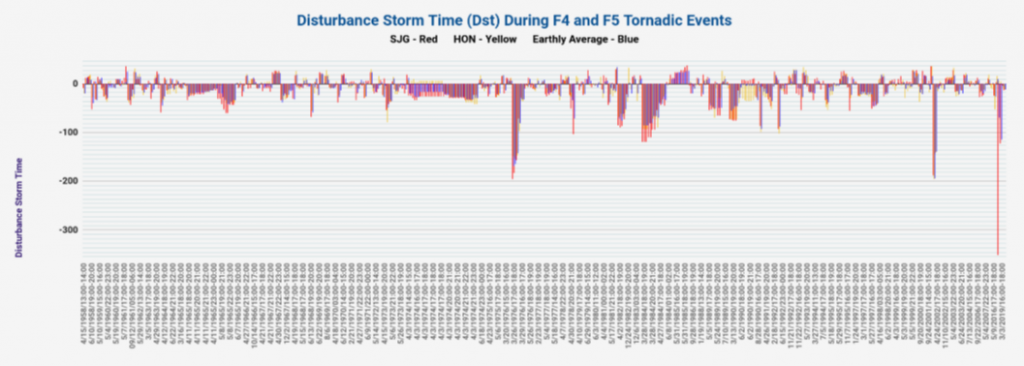
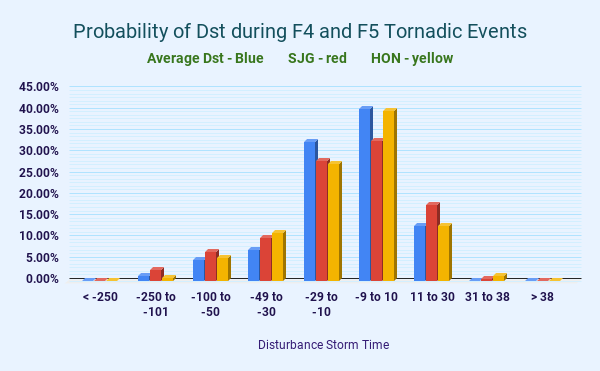
The results reveal a negative skew distribution, which is expected because the data set mean is around -7.5 Dst, the highest is 139.5 Dst and the lowest is -552.5 Dst.
The planetary average during an F4 or F5 tornado from 1958-2007 and 12/2015-3/2019 was -12.4 Dst. The average at HON was similar at -12.1 Dst. The average at SJG was -14.3 Dst: nearly twice as low as the data set mean value.
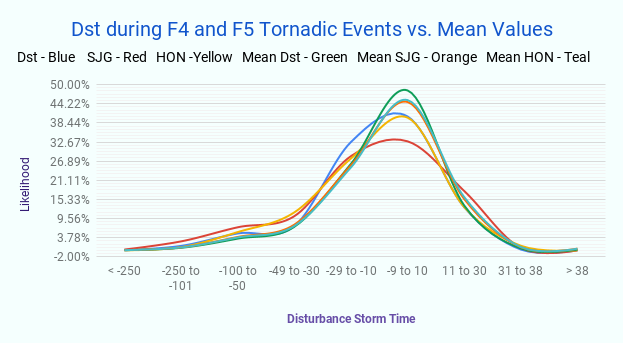
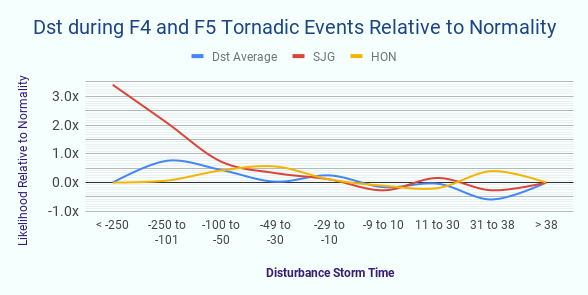
The chance of an electromagnetic anomaly under -49 Dst, indicative of moderate-to-severe solar electromagnetic storming or a moderate geomagnetic anomaly during F4 or F5 tornadic events, is about 30% higher at HON and about 50% higher on average across the planet. The latter figure exists because the chance is distinctly higher at SJG: a correlation 99.2% higher than the mean chance.

CONCLUSIONS
Have the biggest tornadoes in the US in recent history correlated with anomalous solar electromagnetic or geomagnetic activity? The data reveals five separate apparent conclusions.
SUPER-STORMS
Records do show that the F4 in Missouri during the Feb.-Mar. 2017 Tornado Outbreak19 registered at -352.3 Dst in SJG (representing 0.22% of its sample.) This particular event, however, was the only event on record to occur during a super-storm (SJG Dst under -250.) One piece of data is not enough to start drawing conclusions but it’s noteworthy that the chance of having one F4 or F5 tornado on any random day during the observation period [453 tornadoes / ((40 months + 600 months) * 24 hours)] is 0.097% but the odds of one having spawned in the observation period during a super-storm [0.22% data / 0.05% mean] was 340% higher than the data suggests is circumstantial.
A DEPARTURE IN DST DURING F4/F5 EVENTS VS. THE MEAN
On average and at HON, there were fewer nearly average Dst readings during F4 and F5 events due to an increase in negative Dst readings. F4 and F5 tornadoes were generally more likely to occur during readings less than -10 Dst. Just under electromagnetic storm range, -30 to -49 Dst readings were 33% more likely at SJG. -29 to -10 Dst readings were about 11% more likely at SJG.
At SJG, hours during solar electromagnetic and geomagnetic storms below -49 Dst are much more commonly when F4 or F5 tornadoes spawn [1.992% (of the hours were below -49 Dst) * 0.097% (the odds of an F4/F5 tornado) = 0.193% (the likelihood of an F4/F5 tornado during an electromagnetic storm.)]
DST READINGS OVER 38
At times, Dst readings were well over 100 but this research reveals that none of the tornadoes formed when the Dst was over 38. If it’s more than a massive coincidence, it may denote a newly-discovered form of physical inhibition. About one in two hundred hours – 2.28% of the average year – reads over 38 Dst.
SOME DST READINGS ARE MORE INDICATIVE THAN OTHERS
Over 90% of Dst readings were within thirty of zero Dst. SJG was barely the exception in the group, in the mid-to-high eightieth percentile. Theoretically, the balances required to maintain a tornado may respond disruptively to values over 38, while fully tolerating more average values and favoring more locally negative Dst values. This pattern is indicative of tornadoes being an earthly phenomenon that gets influenced, rather than dependent on solar electromagnetic or geomagnetic disturbances. More negative values may serve as an electrochemical catalyst for the atmospheric composition of the largest tornadoes, greasing the skids for them, so to speak.
USING DST AS A WEATHER FORECASTING PARAMETER
As revealed by the data, Disturbance storm-time (Dst) may be a new, useful meteorological forecast parameter for, at least, F4 and F5 tornadoes, potentially uncovering one of perhaps many mysteries regarding why present models often struggle to predict when tornadic weather will transition from severe to catastrophic.
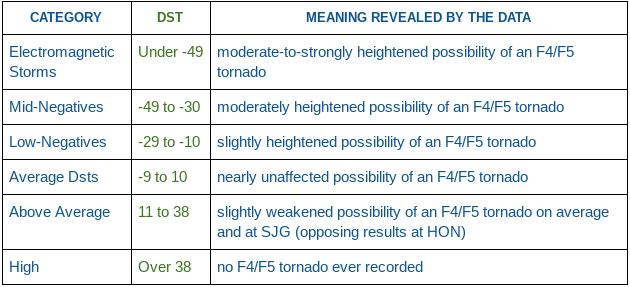
F4/F5 TORNADOES AND THE NORTH POLE
As seen in Appendix A, the recent historic lows of tornadic production relative to the 1950s-1970s, and to a lesser degree before the late-1990s, on its face is the opposite of concerning but it’s very noteworthy when considering how much more tornadic even typical conditions can be. This research helped to unveil that the most chronologically logical correlation has been the drifting of the North Pole, which suddenly kicked up its displacement 378% since the mid-1990s.
The only years with exceptional tornadic activity since the mid-1990s have been the historic El Niño year 1998 and April 201120 giant outbreak, followed by a similar outbreak21 just weeks later. Heightened tornadic activity is typical during a prominent El Niño, making 2011, which was record-breakingly tornadic, the only relatively considerable year since. While the correlation between the placement of the North Pole and F4/F5 tornadic production at this moment remains theoretical, the statistical correlation revealed by this research is eye-opening.
SUMMARY
This research reveals:
1) how Dst averages during each F4 and F5 event relate to data set averages
2) that F4 and F5 events are accompanied by a Dst almost twice as negative as average
3) that no tornadoes sized F4 or F5 formed during the observation period when over 38 Dst
4) SJG’s data is not necessarily but tends to be statistically more negative than the other research stations during F4 and F5 events east of the Rocky Mountains; and is nearly twice as likely to see an F4/F5 tornado during a solar electromagnetic storm or an abnormally prominently negative geomagnetic storm
5) F4 and F5 tornadoes are far less common now than between the late-1950s and mid-1990s, which is heavily statistically related to the presently distancing migration of the North Pole
